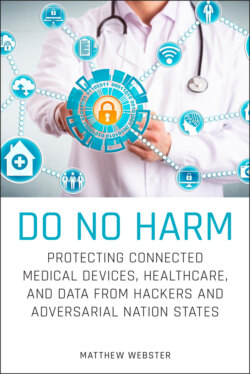Читать книгу Do No Harm - Matthew Webster - Страница 45
The Volume of Health Data
ОглавлениеThe United States has one of the largest per-capita expenditures on healthcare of any modern nation. We have been looking for solutions to reduce those overall costs. The causes of the expenditures are up for debate, but some of the prevailing issues cited include everything from administrative overhead to heavy use of both emergency room visits and acute care utilization. Obviously for the latter, IoMT has the ability to play a part in reducing the overall cost. One study cited by T-Mobile stated that the end result of combining wireless and IoMT devices created a 40% reduction in acute care utilization and a 65% reduction in emergency room utilization. To top things off, IoMT also resulted in a 30% increase in workflow efficiency.1
Think about this from both a hospital and a patient perspective. Trends could indicate a worsening of conditions early on and allow the hospital and patients to respond more quickly. This is a tremendous win across the board. IoMT technology can help in many other ways. Remember the NFC communications in the previous chapter? Just putting an NFC bracelet on a patient and an NFC tag on medicines has resulted in faster validation, fewer incidents of people getting the wrong medicine, and an overall improvement in the system.2 To get this to work, simply check the tag on the patient, and when they need medicine, the medicine is matched against the NFC tag to validate that the patient is receiving the correct medicine. It is a very effective method to reduce problems related to medication errors. Some estimates are between 55% and 86% reduction in errors.3 All of these small changes help to improve many aspects of today's medical treatments.
With so many success stories occurring as a result of improvements, it is no wonder that all the devices that support Medicine 2.0 are proliferating so quickly. COVID-19 is only accelerating the pace of change. This is all part of the beginning stages of Medicine 2.0,which stands on the proverbial back of Web 2.0 technology—basically technology that includes more audio and video content than Web 1.0. We now have more hard drives and more ways of connecting to the internet than ever before. I would also argue that the cloud principle of elasticity has been a huge boon to collecting and storing information. In the past, companies had to spend a tremendous amount of money to continuously expand their infrastructure. The cloud allows companies to get out of the hardware business and focus on the technology that is truly important to them.
If you recall, we stated the average hospital has between 10 and 15 medical devices per patient. While not all of them are producing continuous information, they are providing more and more detailed information at often close to real-time speeds. All that data begins to add up to volumes of information. A December 2019 report by the World Economic Forum said the average amount of data a hospital produces is 50 petabytes (PB) per year.4 While data was collected prior to Medicine 2.0, the volume of data has exploded exponentially—mostly due to the advent of IoMT. Lifewire put together some fantastic statistics to help understand the sheer volume of information. One petabyte is equal to roughly 1.5 million CD-ROM discs, which is equal to 4,000 digital photos taken per day over the course of your entire life.5
Also, to help put things in perspective, since 2016, there has been an 878% growth in the amount of data that has been collected electronically. Some of this is due to the Affordable Care Act, but a large amount of it is due to the proliferation of IoMT devices. Health data is here to stay and is not going away anytime soon.
Projecting into the future, the proverbial holy grail of medicine would be to get a full 360-degree view of a person—to understand what is going on with them on a constant basis. The more data you have, the better and stronger recommendations that may be given. We have a long way to go before we get there, but the technological seeds are in place to cause data to grow exponentially—far more than the amount of data we collect now.
